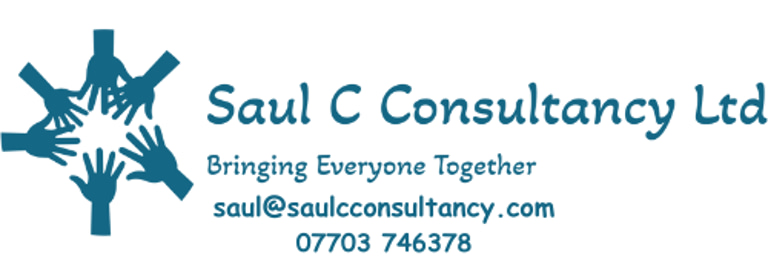

Let’s face it: life has a habit of throwing us a curveball just when we think we’ve got it all figured out. From spilled coffee on your favourite shirt to a client suddenly ghosting you, our daily grind is filled with situations that test our patience and sanity. This is where emotional resilience comes into play—our ability to bounce back, dust ourselves off, and keep moving forward.
Now, emotional resilience isn’t some mystical superpower reserved for motivational speakers. It’s a skill you can build, refine, and flex when life tries to knock you down. If you’ve ever been curious about how your emotional resilience stacks up, the TEIQue (Trait Emotional Intelligence Questionnaire) assessment can give you some insights. Within its detailed report, the TEIQue dissects emotional resilience into 15 fascinating facets. Let’s dive into what emotional resilience really means and how you can develop it, with a sprinkle of humour to keep things light.
What Is Emotional Resilience, Really?
At its core, emotional resilience is your ability to adapt and recover when things go awry. It’s not about never feeling stressed or upset (we’re humans, not robots), but about how you respond when life gets tough. Picture a rubber band: too much tension, and it snaps; just the right amount, and it stretches and springs back into shape. Emotional resilience is your internal rubber band.
The TEIQue assessment helps unpack this concept through its facets, such as self-control, stress management, and emotion regulation. Together, they form the backbone of emotional resilience, like the sturdy frame of your favourite armchair—the one that’s seen you through countless Zoom and Teams meetings.
The Three Pillars of Emotional Resilience
1. Self-Control: Keeping Your Cool When It Counts
Self-control is the unsung hero of emotional resilience. It’s that little voice in your head saying, “Don’t send that angry email” or “Step away from the family-sized bag of crisps.” In stressful situations, self-control helps you avoid knee-jerk reactions that might escalate things. Think of it as the brake pedal in your car: crucial for avoiding emotional collisions.
How can you build it? Start small. Practice taking a deep breath before responding to something that irritates you. If that doesn’t work, channel your inner child and count to 10. Bonus points if you do it out loud for comedic effect.
2. Stress Management: Dodging the Meltdowns
Stress management is like the bouncer at the nightclub of your mind, deciding who gets in and who doesn’t. When life gets overwhelming, this facet helps you prioritise, delegate, and stay focused. Without it, even a minor inconvenience can feel like the end of the world.
Here’s a tip: treat your stress like a bad Tinder date—acknowledge it, then swipe left. Activities like exercise, mindfulness, or even just blasting your favourite guilty-pleasure playlist can work wonders. Remember, you’re not running a marathon; you’re pacing yourself for the long haul.
3. Emotion Regulation: The Art of Not Losing It
Emotion regulation is the glue that holds your emotional resilience together. It’s about understanding your feelings and managing them effectively, rather than letting them control you. Picture it as a thermostat: you adjust it to keep your emotions in the optimal range, no matter how hot or cold the external conditions.
A practical way to improve this skill is to journal your thoughts. OK, it might feel a bit like writing to your teenage diary, but it works. Naming your emotions can make them feel less overwhelming—and less likely to hijack your day.
Why Emotional Resilience Matters
Developing emotional resilience isn’t just about surviving tough times; it’s about thriving despite them. Resilient people tend to be more optimistic, adaptable, and better equipped to handle change. They’re like emotional ninjas, gracefully dodging negativity and emerging stronger.
Plus, being resilient has a ripple effect. Your ability to stay calm and composed can inspire others to do the same. Whether it’s at work, with family, or with friends, resilience is contagious (in a good way—unlike whatever’s going around the office).
Building Resilience: A Work in Progress
If you’re reading this and thinking, “Great, but I’m about as resilient as a soggy piece of toast,” don’t worry. Emotional resilience isn’t a fixed trait; it’s something you can develop over time. Start by reflecting on your reactions to stressful situations. What went well? What could you improve?
The TEIQue assessment can be a great tool for this journey. By understanding your strengths and areas for growth across the 15 facets, you can create a tailored action plan to boost your resilience. It’s like having a roadmap for your emotional well-being—minus the confusing detours.
Life will always have its fair share of challenges, from awkward encounters to full-blown crises. But with emotional resilience, you can face them head-on and come out stronger (and maybe even a little wiser). So, next time you’re stuck in traffic, your coffee order gets messed up, or your Wi-Fi cuts out during a crucial meeting, remember: you’ve got this. And if all else fails, there’s always chocolate.
Embrace your inner emotional rubber band, and keep bouncing back. Resilience isn’t about being perfect; it’s about showing up, trying your best, and laughing at life’s absurdities along the way.
www.saulcconsultancy.com
